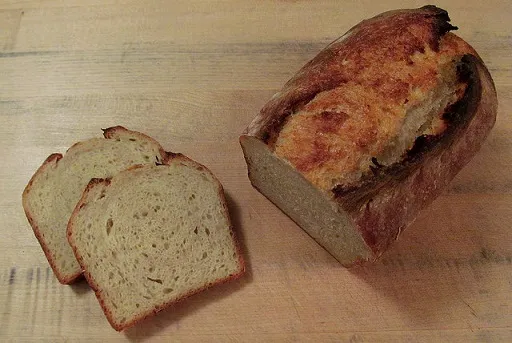
I made 2 different sandwich loaves and used the no knead method for both. My first loaf was mostly white flour and naturally leavened using discarded sourdough starter. Baker's Percentages: 90% APF, 10% WW, 90% water, 15% discarded SD starter, 2.1% salt. I got great oven spring with this loaf and it was nice and sour.
My second loaf had 20% whole wheat flour and mashed cooked sweet potato. It was leavened with instant dry yeast (no levain). Baker's percentages: 80% APF, 20% WW, 80% water, 20% mashed cooked sweet potato, 0.18% instant dry yeast (SAF red), 2.2% salt.
I was pretty amazed that such a tiny amount of instant dry yeast could raise bread. (I used 1 gram IDyeast for 560 flour = 0.18%.). Ah, the magic of time. I mashed my sweet potato coarsely which meant there were tiny bits of orange sweet potato throughout the bread. It was little gummy which seems to be a trend for me lately, but I toast my bread anyway so it doesn't bother me.
Even though they were no knead breads, the crumb on both loaves ended up quite fine instead of open and holey which was totally okay with me. My almond butter didn't ooze out!
The no-knead method I used for both loaves:
- I mixed all ingredients in a bowl with a spoon, covered the bowl and let it sit undisturbed at room temp (68-70F) for 10 hours.
- Then I put it in the refrigerator (40F) for 20 hours.
- I shaped the cold dough into a log and put it into a loaf pan.
- Then I let it proof at room temp (68-70F) for 2 hours.
- I baked at 450F for 45 minutes (with steam for the first 20 min).
I baked some chocolate cupcakes for a friend's birthday. I've been using Ina Garten's "Beatty's Chocolate Cake" recipe for years and it always turns out great whether it's a layered cake or cupcakes. It's pretty much a one bowl cake recipe that I mix by hand. The frosting is simply melted (68% cacao) chocolate, butter and powdered sugar.
:) Mary
- emkay's Blog
- Log in or register to post comments
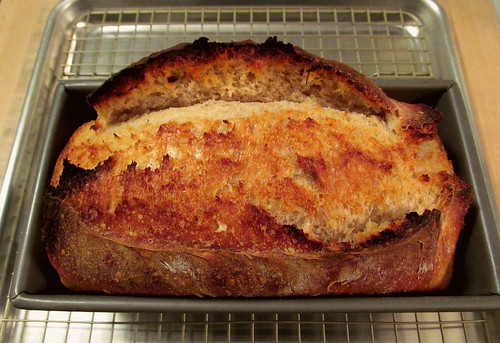

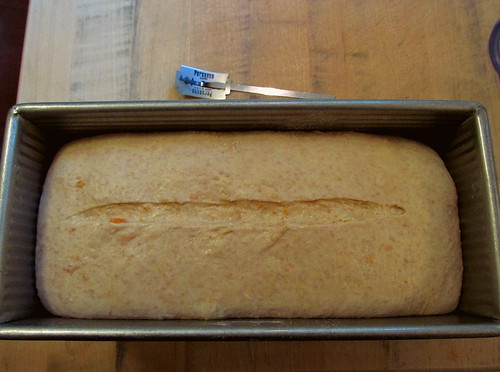
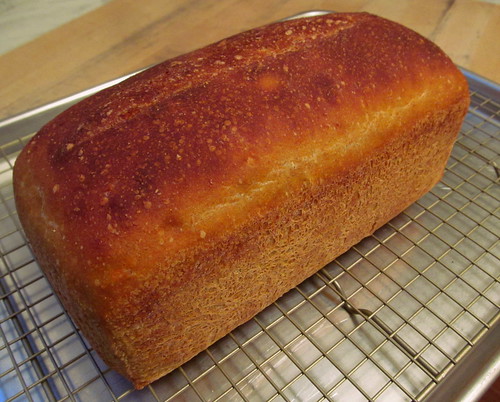
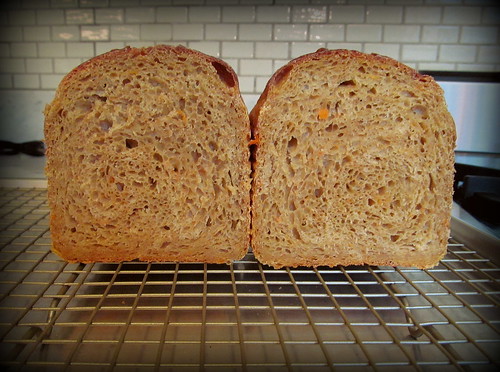
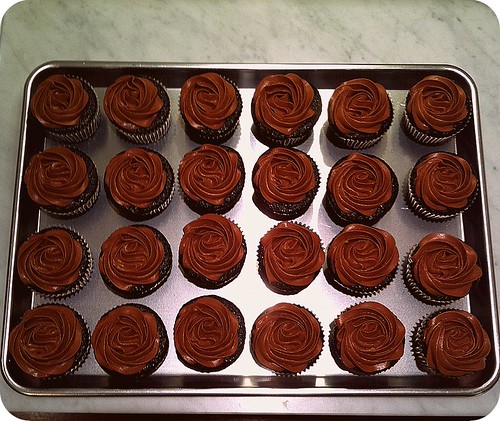
Hi kenlklaser- For both loaves, the volume increase during the final proof was pretty minimal. Maybe 25% at most. I think most of the volumetric growth happened in the oven. I have most of my Flickr album set to "not public" since that's the default when uploading my pix. I guess I'm too lazy to change the setting. :)
Hi Mary,
Beautiful loaves. I especially like how the SD sandwich loaf turned out - lovely bloom when baking.
I too use very little IY and have fine results. I do a 15+ hour bulk ferment plus a 2 hour proof and with my freshly ground whole grains I can use 0.4% or less!!! (Depends upon enrichments added to the dough.) Learned it all here otherwise I would have been using a bunch too!
Thanks for sharing.
Janet
Hi Janet - When I first started baking with dry yeast, I always thought that everything tasted too yeasty. In hindsight, most recipes are written to use up the whole 7g sachet of yeast. But just like you, I learned here that a tiny bit of IDY can go a long way as long as the dough has more time to develop.Those little yeasties are amazing.
Not only are they really good looking but easy on the kneading for those stricken with arthritis and perfect for those who don't have a mixer either. it is also great forus lazy old folks :-)
I think the reason the Tiny bit of IDY works well is that normally if you were going to use a tiny amount of IDY you would make a poolish and let it sit out for 10-12 hours so the yeast could replicate enough so that when it hits the dough it is ready and able to do the heavy lifting. In this case, you add a tiny bit to the whole mix and let it sit out for 10 hours. The yeast can only replicate so fast so what you have done is make the same amount of yeast as would be in a poolish but they are just diluted the same amount as a poolish would be diluted when it hits the dough.
The long retard really has to help the flavor of both of these breads. Well done and
Happy Baking
Hi dabrownman - Thank you for the explanation. I never gave it much thought, but it totally makes sense why a poolish works so well. All I knew was that, poolish or not, I would need more time if I used less yeast.
Would you give the measurements of your loaf pan, please?
Hi Ingrid - The SD loaf was baked in an 8.5 in x 4.5 in x 2.75 inch loaf pan. The IDY loaf was baked in a 9 x 4 x 4 inch pullman.
They look so perfect. Love the cupcakes, too. Impressive bakes, all! Makes me want to have a sandwich right now (and a cupcake, as I am starving....) Best, Phyllis
Thanks Phyllis! Everything was delicious especially the cupcakes. I will report back on your flatbread recipe when I get a chance to make them (hopefully next weekend).
:) Mary
I have to have a go at the SD loaf, or maybe both. They look scrumptious!